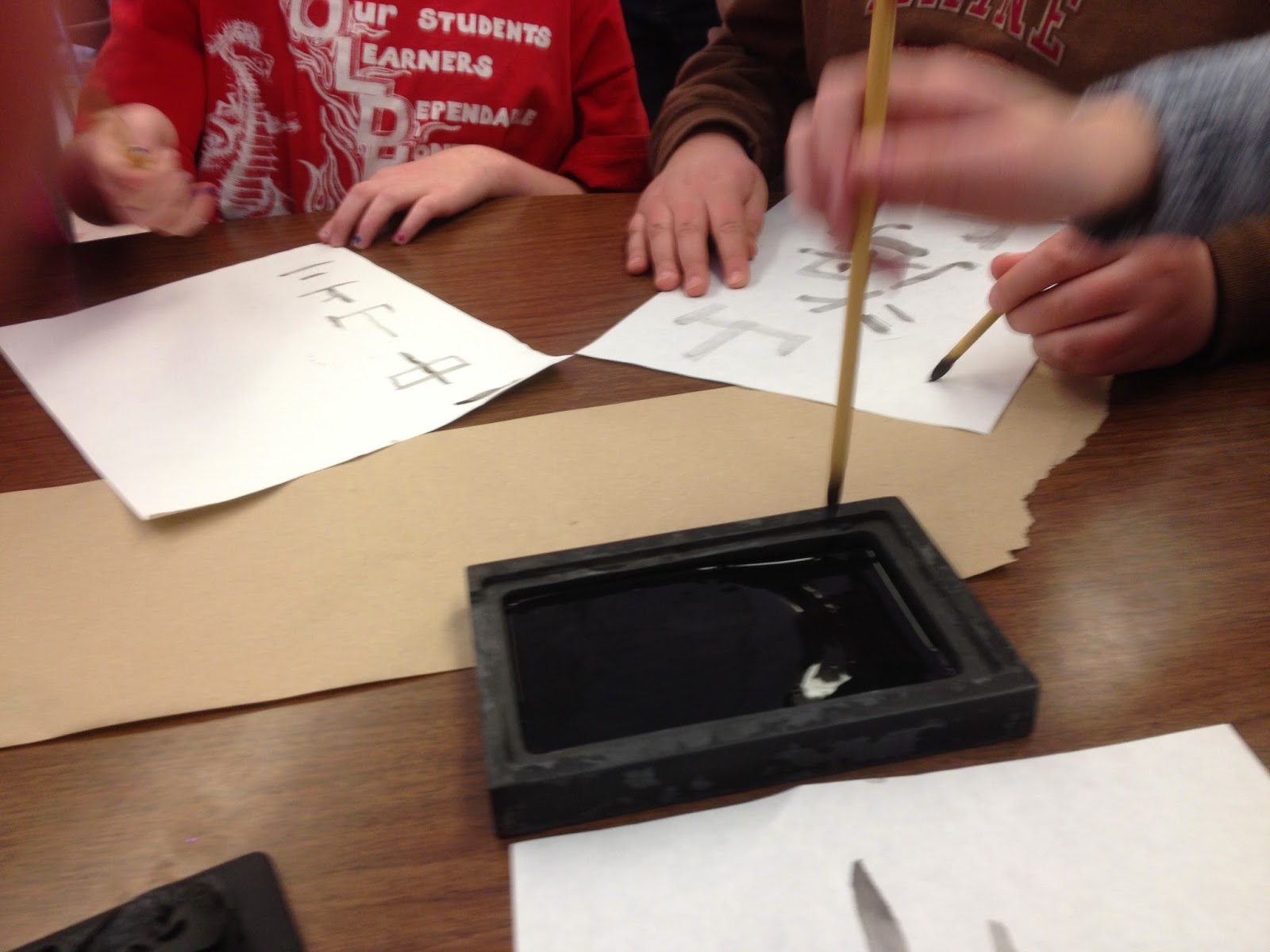The Way Of Tea
Before the 'ceremony' starts the kids all have to wash their hands to purify themselves. They then bow silently to the hostess.
As the kids enter into the 'tea room' they stop and admire a piece of art work. They each have to give some kind of words of admiration about the beauty of the art work to the tea hostess.
Above you can see the kids starting of eating a sweet treat or higashi. Japanese tea is extremely bitter. Keeping a harmonious balance is important to the Japanese. So the ceremony is started with a sweet treat to balance out the bitter tea. They always have to bow and thank the hostess for the treat.
The kids are served the tea in order, by the oldest to the youngest. The tea cup is held in the left hand and the tea is poured. Then the right hand turns the cup three times to the left. The kids then drink the tea. And the cup is turned back three times to the right. The purpose of turning the cup is for every one to admire the beauty of the ceramic cups.
Calligraphy (Shodo) The Way of Writing
Calligraphy is a traditional part of Japanese culture. Elementary students in Japan learn the basics of calligraphy in penmanship classes.
For the calligraphy part of the unit I show them examples of Japanese Kanji; which are an adaption of Chinese characters.
First, they kids get to make the ink. They do this by using an ink stick, which is ground into ink stone with water.
They then get to try make different Kanji characters using different sized calligraphy brushes. They press hard with the brushes to make thick lines and press softly to make thinner lines. They are also reminded to hold the brushes straight up and down, not at an angle. There is also a metal bar called a bunchin that can be used to weigh down their papers while they are writing.
The Logistics
The whole unit lasted about 7 weeks, as we meet once a week for 45 minutes. The printmaking took the most amount of time, about 3 weeks. I also had my intern with me, which helped with the printing process, as I only had two print stations.
If you want to see more of my Japanese art unit, you can check it out here.
I can't end this post without a big 'thank you' to the Japan Fulbright Memorial Fund. One of the highlights of my teaching career!
I'd like to hear what you think about this Japanese art/culture unit. You can comment below.








No comments:
Post a Comment
Let me know what you think!